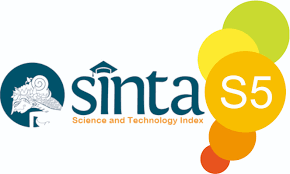Do the Implementation of Green Practices Initiatives in Starbucks Increase the Number of Tourists to a City? (Study Case of Starbucks in Pontianak)
 Abstract views: 853
,
Abstract views: 853
,
 PDF downloads: 528
PDF downloads: 528
Abstract
This study aims to examine the influence of Eco-friendly Practices, Green Brand Image and Green Initiatives on the number of tourists visiting Pontianak. The type of research used in this research is quantitative by using a survey method wherein survey research using a questionnaire that will be given to respondents according to predetermined criteria. The population of this research is the consumer who has visited, received offers and made purchase decisions at least two times for Starbucks products with the sample is 100 respondents. The technique used is non-probability sampling, which is a sampling technique that does not provide equal opportunities for each element or member of the population to be selected as samples, and the purposive sampling method is a sampling technique with certain considerations. The data will be analyzed by using PASW Statistics 18 software application and the method used is multiple linear regression with the variables of Eco-Friendly Practices, Green Brand Image and Green Initiatives, and several tourists. The results show that Eco-Friendly Practices, Green Brand Image and Green Initiatives have a significant effect number of tourists visiting Pontianak.
Downloads
References
Ch’ng, P.-C., Cheah, J., & Amran, A. (2021). Eco-innovation practices and sustainable business performance: The moderating effect of market turbulence in the Malaysian technology industry. Journal of Cleaner Production, 283, 124556.
Dr. Wahidmurni, M. P. (2017). Pemaparan Metode Penelitian Kualitatif. UIN Maulana Malik Ibrahim.
El-Kassar, A.-N., & Singh, S. K. (2019). Green innovation and organizational performance: the influence of big data and the moderating role of management commitment and HR practices. Technological Forecasting and Social Change, 144, 483–498.
Jermsittiparsert, K., Siriattakul, P., & Wattanapongphasuk, S. (2019). Determining the environmental performance of Indonesian SMEs influence by green supply chain practices with moderating role of green HR practices. International Journal of Supply Chain Management, 8(3), 59–70.
Kim, J.-Y., Hlee, S., & Joun, Y. (2016). Green practices of the hotel industry: Analysis through the windows of smart tourism system. International Journal of Information Management, 36(6), 1340–1349.
Langgat, J. (2020). Route to Green Restaurant: Malaysian Perceptions and Attitudes. International Journal of Business and Social Science, 11(5).
Lee, M. J., Kang, H., Choi, H., & Olds, D. (2020). Managerial attitudes towards green practices in educational restaurant operations: An importance-performance analysis. Journal of Hospitality & Tourism Education, 32(3), 142–155.
Namkung, Y., & Jang, S. (2017). Are consumers willing to pay more for green practices at restaurants? Journal of Hospitality & Tourism Research, 41(3), 329–356.
Okumus, F., Köseoglu, M. A., Chan, E., Hon, A., & Avci, U. (2019). How do hotel employees’ environmental attitudes and intentions to implement green practices relate to their ecological behavior? Journal of Hospitality and Tourism Management, 39, 193–200.
Pandey, R. U., Surjan, A., & Kapshe, M. (2018). Exploring linkages between sustainable consumption and prevailing green practices in reuse and recycling of household waste: Case of Bhopal city in India. Journal of Cleaner Production, 173, 49–59.
Rehman Khan, S. A., & Yu, Z. (2020). Assessing the eco-environmental performance: an PLS-SEM approach with practice-based view. International Journal of Logistics Research and Applications, 1–19.
Sugiyono. (2014). Metode Penelitian Kuantitati Kualitatif Dan R&D. CV. Alfabeta.
Tih, S., & Zainol, Z. (2012). Minimizing waste and encouraging green practices. Jurnal Ekonomi Malaysia, 46(1), 157–164.
Xu, Y., & Jeong, E. (2019). The effect of message framings and green practices on customers’ attitudes and behavior intentions toward green restaurants. International Journal of Contemporary Hospitality Management.
Copyright (c) 2021 Helma Malini

This work is licensed under a Creative Commons Attribution-ShareAlike 4.0 International License.
Authors who publish with this journal agree to the following terms:
- The author (s) keeps copyright on any article.
- The author grants the journal, right of first publication with the work simultaneously licensed under a Creative Commons Attribution License that allows others to share the work with an acknowledgement of the work’s authorship and initial publication in this journal.
- Authors can enter separate, additional contractual arrangements for the non-exclusive distribution of the journal’s published version of the work (e.g., post it to an institutional repository or publish it in a book), with an acknowledgement of its initial publication in this journal.
- Authors are permitted and encouraged to post their work online (e.g., in institutional repositories or on their website) prior to and during the submission process, as it can lead to productive exchanges, as well as earlier and greater citation of published work.
- We distributed the article, and any associated published material under the Creative Commons Attribution-Share alike 4.0 International License




